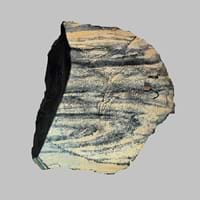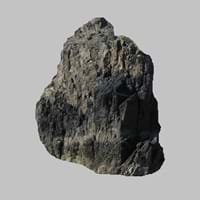Definition
Oil Shale is a fine-grained sedimentary rock from which oil is extracted
Metapelite is an old and currently not widely used field geological term for a clay rich fine-grained clastic sediment or sedimentary rock, i.e. mud or a mudstone
Discoverer
Unknown
Unknown
Etymology
From Old English scealu in its base sense of thing that divides or separate
From Pelos or clay in Greek
Class
Sedimentary Rocks
Metamorphic Rocks
Sub-Class
Durable Rock, Soft Rock
Durable Rock, Medium Hardness Rock
Group
Not Applicable
Not Applicable
Other Categories
Fine Grained Rock, Opaque Rock
Coarse Grained Rock, Fine Grained Rock, Medium Grained Rock, Opaque Rock
Texture
Splintery
Foliated
Color
Black, Brown, Buff, Green, Grey, Red, Yellow
Dark Greenish - Grey, Green, Light Green, Light Greenish Grey
Durability
Durable
Durable
Interior Uses
Not Yet Used
Decorative Aggregates, Interior Decoration
Exterior Uses
Not Yet Used
As Building Stone, As Facing Stone
Other Architectural Uses
Not Yet Used
Curbing
Construction Industry
Cement Manufacture, Construction Aggregate, for Road Aggregate, Serves as an Oil and Gas Reservoir rock
Cement Manufacture, Construction Aggregate, for Road Aggregate
Medical Industry
Not Yet Used
Not Yet Used
Antiquity Uses
Artifacts
Artifacts
Commercial Uses
An Oil and Gas Reservoir
Commemorative Tablets, Creating Artwork
Types
Carbonate-rich Shale, Siliceous Shale and Cannel Shale
Not Available
Features
Easily splits into thin plates, Generally rough to touch, Is one of the oldest rock, Very fine grained rock
Easily splits into thin plates, It is One of the Oldest, Strongest and Hardest Rock
Archaeological Significance
Monuments
Not Yet Used
Not Yet Used
Famous Monuments
Not Applicable
Not Applicable
Sculpture
Not Yet Used
Not Yet Used
Famous Sculptures
Not Applicable
Not Applicable
Pictographs
Not Used
Used
Petroglyphs
Not Used
Used
Figurines
Not Yet Used
Not Yet Used
Formation
Oil Shale forms on the beds of seas and lakes and its formation starts with the organic debris settling and accumulating at the bottom of a lake or sea which are then transformed into rock with the help of high temperature and pressure.
Due to change in environmental conditions, rocks are heated and pressurized deep inside the Earth's surface. Metapelite is formed from the extreme heat caused by magma or by the intense collisions and friction of tectonic plates.
Mineral Content
Albite, Biotite, Calcite, Chert, Chlorite, Dolomite, Hematite, Micas, Muscovite or Illite, Pyrite, Quartz, Silica, Sulfides
Albite, Chlorite, Quartz
Compound Content
Ca, Fe, Mg, Silicon Dioxide, Sodium
Aluminium Oxide, CaO, MgO
Types of Metamorphism
Not Applicable
Not Applicable
Types of Weathering
Biological Weathering, Chemical Weathering, Mechanical Weathering
Biological Weathering, Chemical Weathering, Mechanical Weathering
Types of Erosion
Chemical Erosion, Sea Erosion, Water Erosion
Chemical Erosion, Coastal Erosion, Water Erosion, Wind Erosion
Grain Size
Very fine-grained
Medium to Fine Coarse Grained
Fracture
Not Available
Fibrous
Porosity
Highly Porous
Highly Porous
Cleavage
Slaty
Not Available
Toughness
2.6
Not Available
Specific Gravity
2.2-2.8
3.4-3.7
Transparency
Opaque
Opaque
Density
2.4-2.8 g/cm3
0-300 g/cm3
Resistance
Heat Resistant, Impact Resistant
Heat Resistant, Impact Resistant, Pressure Resistant
Deposits in Eastern Continents
Asia
Bangladesh, China, India, Israel, Jordan, Russia, Syria, Thailand, Turkey
Not Yet Found
Africa
Ethiopia, Kenya, Morocco, South Africa, Tanzania
Western Africa
Europe
Austria, France, Germany, Greece, Italy, Romania, Scotland, Spain, Sweden, Switzerland
United Kingdom
Others
Greenland, Not Yet Found
Not Yet Found
Deposits in Western Continents
North America
Canada, USA
Not Available
South America
Bolivia, Brazil, Chile, Colombia, Ecuador, Peru, Venezuela
Brazil, Colombia, Ecuador
Deposits in Oceania Continent
Australia
New South Wales, New Zealand, Queensland, Victoria, Western Australia
Central Australia, Western Australia
Oil shale vs Metapelite Characteristics
Though some rocks look identical, they have certain characteristics which distinguish them from others. Characteristics of rocks include texture, appearance, color, fracture, streak, hardness etc. Oil shale vs Metapelite characteristics assist us to distinguish and recognize rocks. Also you can check about Properties of Oil shale and Properties of Metapelite. Learn more about Oil shale vs Metapelite in the next section. The interior uses of Oil shale include Not yet used whereas the interior uses of Metapelite include Decorative aggregates and Interior decoration. Due to some exceptional properties of Oil shale and Metapelite, they have various applications in construction industry. The uses of Oil shale in construction industry include Cement manufacture, Construction aggregate, For road aggregate, Serves as an oil and gas reservoir rock and that of Metapelite include Cement manufacture, Construction aggregate, For road aggregate.
More about Oil shale and Metapelite
Here you can know more about Oil shale and Metapelite. The life cycle of a rock consists of formation of rock, composition of rock and transformation of rock. The composition of Oil shale and Metapelite consists of mineral content and compound content. The mineral content of Oil shale includes Albite, Biotite, Calcite, Chert, Chlorite, Dolomite, Hematite, Micas, Muscovite or Illite, Pyrite, Quartz, Silica, Sulfides and mineral content of Metapelite includes Albite, Chlorite, Quartz. You can also check out the list of all Sedimentary Rocks. When we have to compare Oil shale vs Metapelite, the texture, color and appearance plays an important role in determining the type of rock. Oil shale is available in black, brown, buff, green, grey, red, yellow colors whereas, Metapelite is available in dark greenish - grey, green, light green, light greenish grey colors. Appearance of Oil shale is Muddy and that of Metapelite is Banded. Properties of rock is another aspect for Oil shale vs Metapelite. The hardness of Oil shale is 2-3 and that of Metapelite is 5-6. The types of Oil shale are Carbonate-rich Shale, Siliceous Shale and Cannel Shale whereas types of Metapelite are Not Available. Streak of rock is the color of powder produced when it is dragged across an unweathered surface. The streak of Oil shale is white while that of Metapelite is unknown. The specific heat capacity of Oil shale is 0.39 kJ/Kg K and that of Metapelite is 0.72 kJ/Kg K. Depending on the properties like hardness, toughness, specific heat capacity, porosity etc., rocks are resistant to heat, wear, impact, etc.Oil shale is heat resistant, impact resistant whereas Metapelite is heat resistant, impact resistant, pressure resistant.





